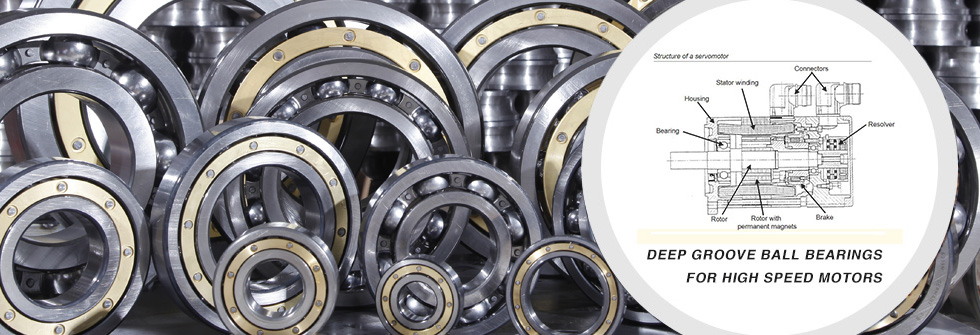Lubrication Of Electric Motor Bearings (EMQ bearing)
2015-12-14Proper lubrication of ball and roller bearings in electric motors is essential to their health. Grease reduces friction and protects the surface finish from rust during long idle periods and in unfavorable environmental conditions. It also transfers heat from the bearing and even helps protect the bearing from dirt and contaminants. Since bearing life—and, by extension, motor life—depends on proper lubrication, it’s important to use the right grease for the application and to re-lubricate bearings at the correct intervals.
The basics
Grease is a “dirt magnet,” so it’s surprising to many that packing it into the cavity around the bearing actually helps keep dirt and other contaminants from getting into this critical component.
On very old motors, lubrication was provided by oil-soaked felt that “wicked” oil to the bearings. Grease serves this function in today’s machines. Consisting of oil suspended in a base material like lithium, calcium or polyurea, it lubricates the bearing continuously while preventing the oil from leaching out. Depending on its composition, different greases may be better suited for one application than another. For example, one may be superior at high or low temperatures, another impervious to water, while still others retain oil better under extreme pressures.
Types of grease in motor bearings
Some motor manufacturers have used polyurea-based grease—which performs well at high temperatures (over 250 F) and high speeds (10,000 rpm or higher)—almost exclusively for more than 30 years. Recently, though, several of them have switched to a second-generation polyurea grease that reportedly has even better properties than the old standby. Because these manufacturers produce tens of thousands of motors weekly, their decision to change grease is significant. Such a move indicates a high confidence level in that grease.
Bearing manufacturers, on the other hand, use various greases, depending on application requirements. As a result, the replacement bearings you buy from your local bearing supplier might not contain grease that is compatible with what you use in your plant. So, be careful.
Lubrication intervals
Ultrasonic listening equipment, vibration analysis and thermography all can help predict bearing failures. But according to some sources, an operator tends to grease a bearing only when it “gets noisy enough that he can hear it” over the ambient sound of surrounding equipment. By that time, the damage has been done. Pumping in a few ounces of grease may mask the noise for a while, but it is too late to save the bearing.
Assuming you have a good predictive maintenance program and want to improve on preventive maintenance, how often should you grease the bearings in an electric motor? If you read the manuals for a dozen different electric motors, you’ll likely find 12 different recommendations.
Some of the factors that determine how often a bearing should be greased are:
- Operating hours
- Operating temperature
- RPM
- Bearing size
- Bearing type (ball or roller)
- Cleanliness of environment
- Vibration levels
- Criticality of operation
One of the best charts for determining lubrication intervals is based on the bearing bore diameter, rpm, yearly operating hours and type (ball, roller, thrust, etc.). Unfortunately, this chart is not very practical. That’s because the person responsible for greasing the bearings usually doesn’t know the bearing sizes of every motor, and some motors have a different bearing size on each end.
Another drawback of this method is that each motor in a plant probably will have a different lubrication schedule—motors could be installed at different times, they could operate a different number of hours/year, their usage could vary with the seasons. It’s easy to see why something that sounds simple (e.g. “Grease the bearing every 4000 operating hours with 1.0 ounces of fresh grease”) may be hard to implement.
Various industries have tried to simplify the task by developing practical guidelines like those in Table II. Each represents a compromise, though, so none of them works for every situation.
One thing that bearings and motor windings have in common is the 10-degree rule. Every 10 C degree increase in temperature cuts their life expectancy in half. If a blanket of grease raises the winding temperature 20 C degrees, the winding will last only one-fourth as long as it should have. With an increase of 50 C degrees, a winding that should last 20 years would have a life expectancy of only about eight months. Unless you really enjoy changing motors in the middle of the night, try not to do anything that increases the motor temperature!











